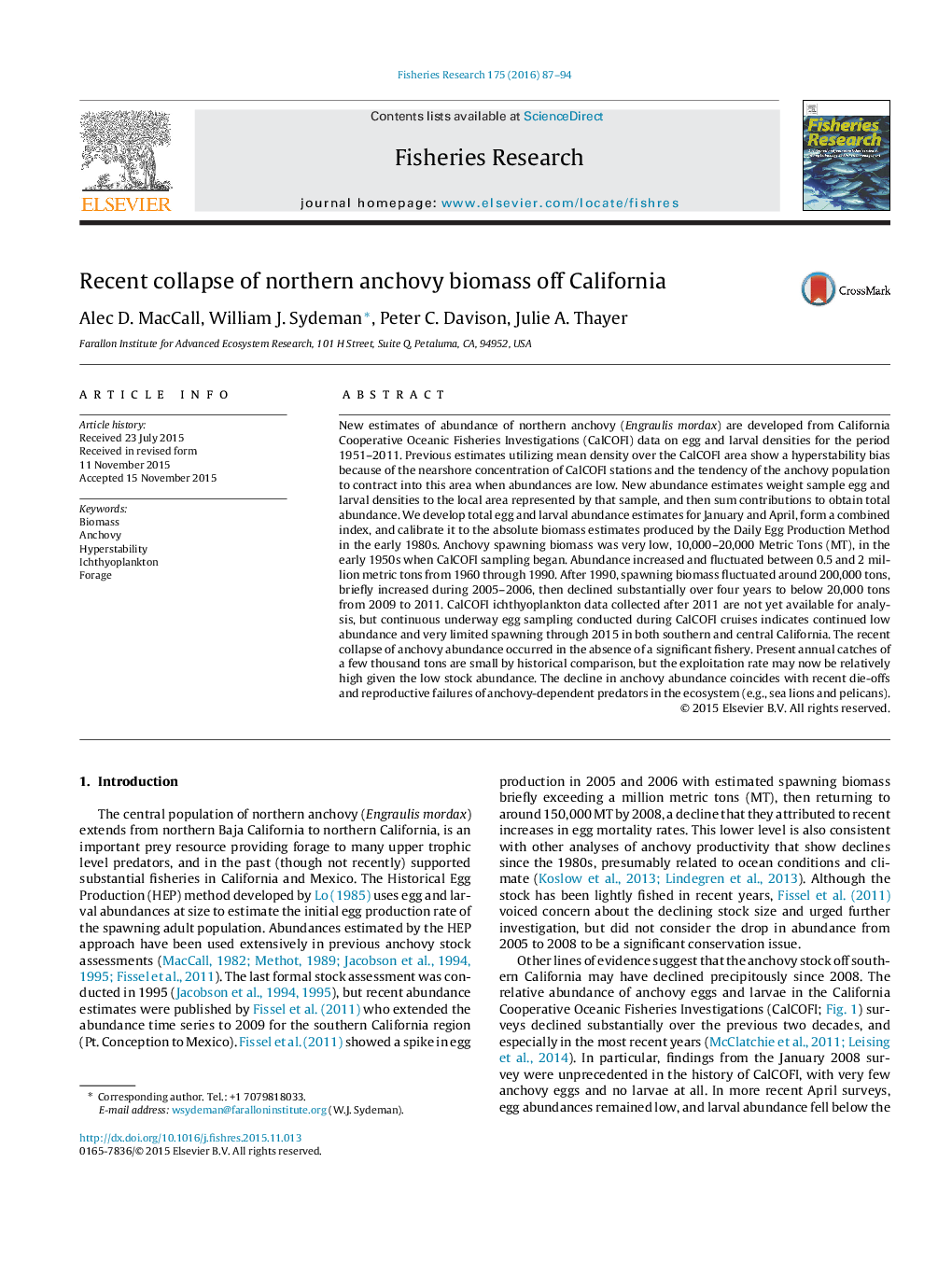| کد مقاله | کد نشریه | سال انتشار | مقاله انگلیسی | نسخه تمام متن |
|---|---|---|---|---|
| 6385293 | 1626794 | 2016 | 8 صفحه PDF | دانلود رایگان |
عنوان انگلیسی مقاله ISI
Recent collapse of northern anchovy biomass off California
ترجمه فارسی عنوان
فروپاشی اخیر زیست توده آنچوی شمالی در کالیفرنیا
دانلود مقاله + سفارش ترجمه
دانلود مقاله ISI انگلیسی
رایگان برای ایرانیان
کلمات کلیدی
زیست توده، ماهی کولی، انسداد پذیری، ایکتیوپلانکتون، علوفه،
موضوعات مرتبط
علوم زیستی و بیوفناوری
علوم کشاورزی و بیولوژیک
علوم آبزیان
چکیده انگلیسی
New estimates of abundance of northern anchovy (Engraulis mordax) are developed from California Cooperative Oceanic Fisheries Investigations (CalCOFI) data on egg and larval densities for the period 1951-2011. Previous estimates utilizing mean density over the CalCOFI area show a hyperstability bias because of the nearshore concentration of CalCOFI stations and the tendency of the anchovy population to contract into this area when abundances are low. New abundance estimates weight sample egg and larval densities to the local area represented by that sample, and then sum contributions to obtain total abundance. We develop total egg and larval abundance estimates for January and April, form a combined index, and calibrate it to the absolute biomass estimates produced by the Daily Egg Production Method in the early 1980s. Anchovy spawning biomass was very low, 10,000-20,000 Metric Tons (MT), in the early 1950s when CalCOFI sampling began. Abundance increased and fluctuated between 0.5 and 2 million metric tons from 1960 through 1990. After 1990, spawning biomass fluctuated around 200,000 tons, briefly increased during 2005-2006, then declined substantially over four years to below 20,000 tons from 2009 to 2011. CalCOFI ichthyoplankton data collected after 2011 are not yet available for analysis, but continuous underway egg sampling conducted during CalCOFI cruises indicates continued low abundance and very limited spawning through 2015 in both southern and central California. The recent collapse of anchovy abundance occurred in the absence of a significant fishery. Present annual catches of a few thousand tons are small by historical comparison, but the exploitation rate may now be relatively high given the low stock abundance. The decline in anchovy abundance coincides with recent die-offs and reproductive failures of anchovy-dependent predators in the ecosystem (e.g., sea lions and pelicans).
ناشر
Database: Elsevier - ScienceDirect (ساینس دایرکت)
Journal: Fisheries Research - Volume 175, March 2016, Pages 87-94
Journal: Fisheries Research - Volume 175, March 2016, Pages 87-94
نویسندگان
Alec D. MacCall, William J. Sydeman, Peter C. Davison, Julie A. Thayer,
